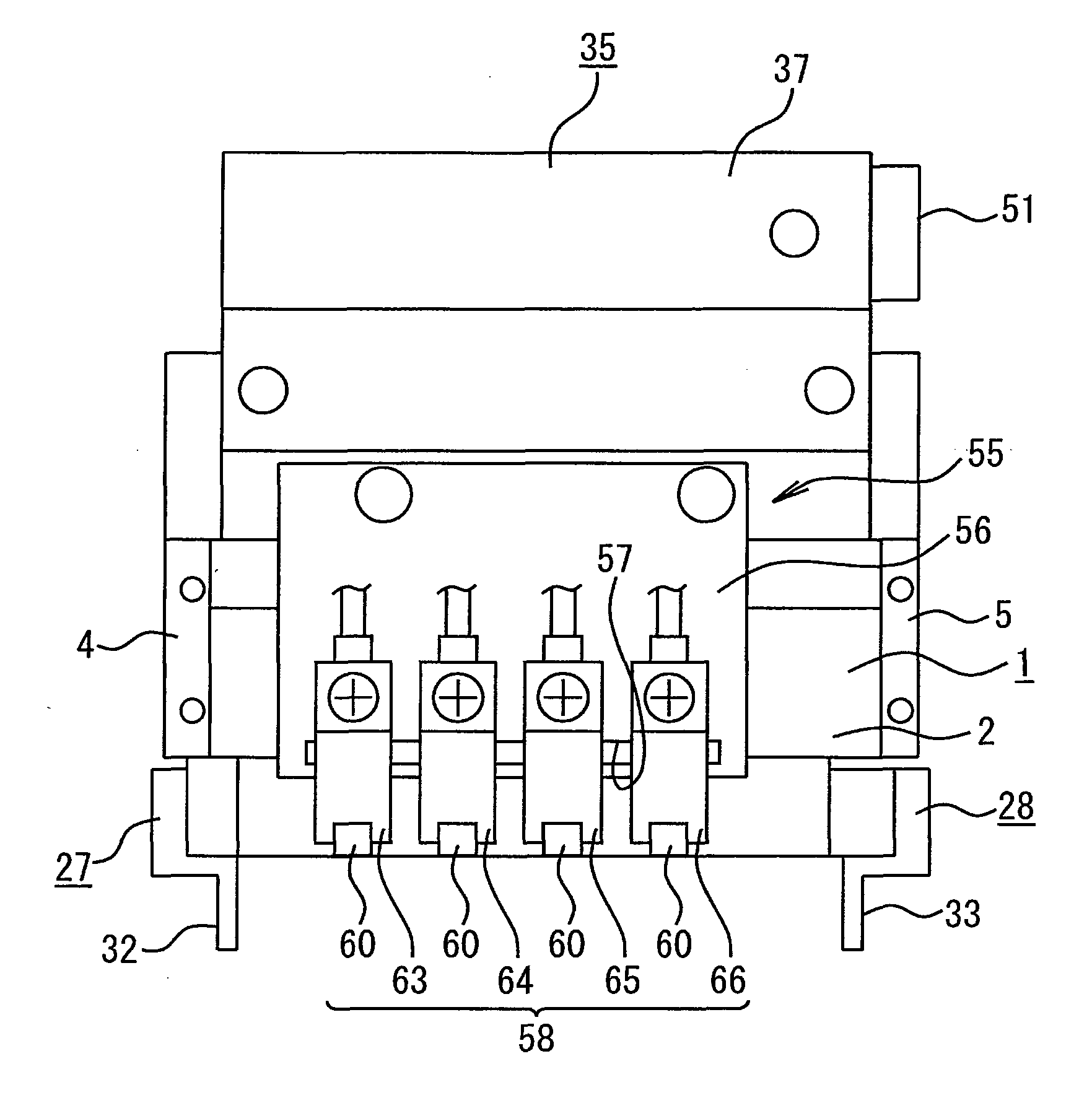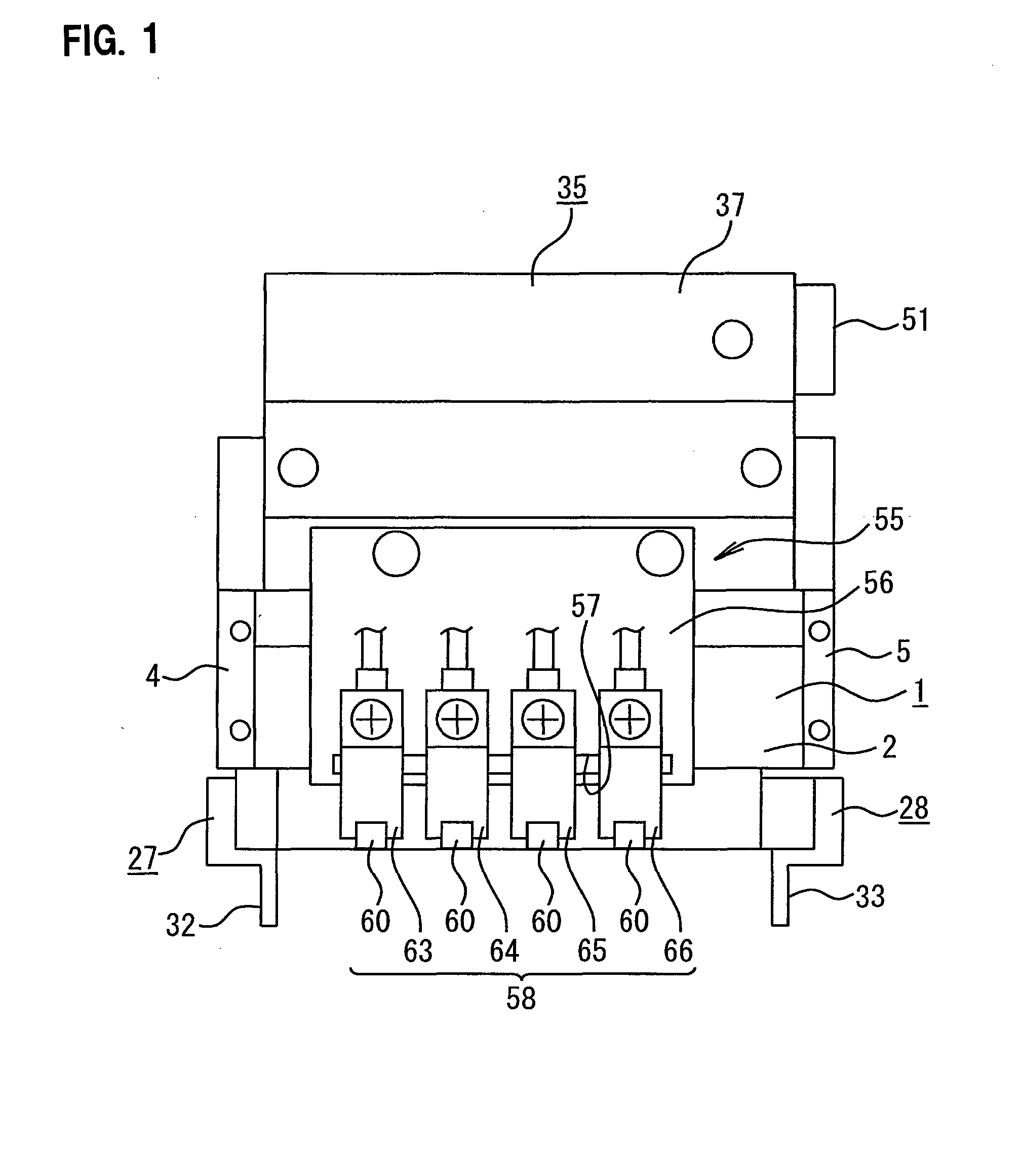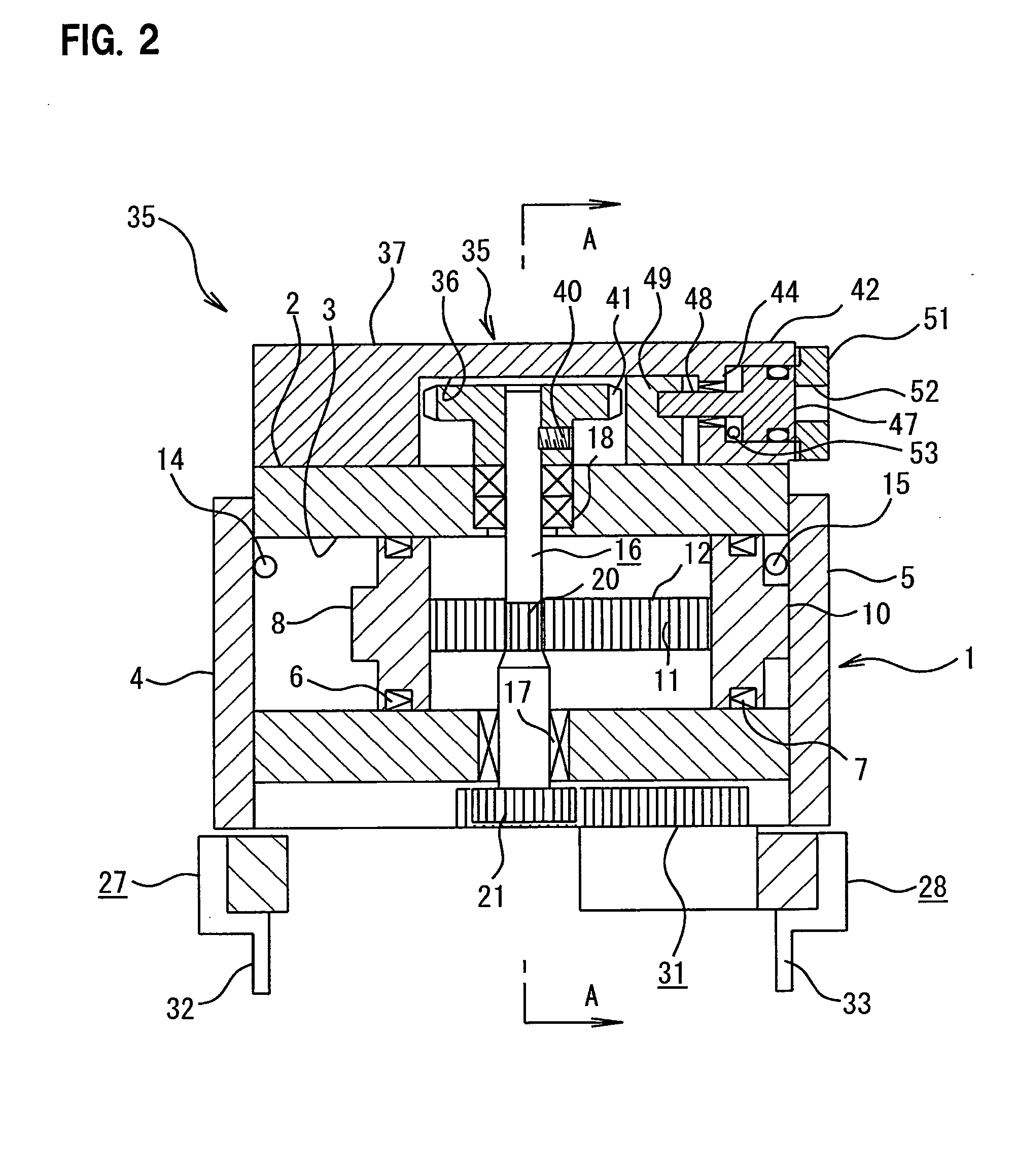Robot Hand for Industrial Robot
a robot and hand technology, applied in the direction of gripping heads, program control, instruments, etc., can solve the problems of forming a constant standby open clearance, troublesome deterioration of workability, and work taking time, so as to improve workability and improve workability. the effect of widening the standby open clearance of the finger body
- Summary
- Abstract
- Description
- Claims
- Application Information
AI Technical Summary
Benefits of technology
Problems solved by technology
Method used
Image
Examples
first embodiment
[0027]The first embodiment of the present invention is described with reference to the figures. A rack and pinion mechanism (1) of the present embodiment is hereinafter described in detail. As shown in FIG. 2, a column shaped hand cylinder chamber (3) is formed in a hand cylinder (2) and penetrates the hand cylinder (2) with both ends of the hand cylinder chamber (3) being sealed by a pair of sealing wall (4), (5), and a pair of hand pistons (8), (10) having gaskets (6), (7) secured to the external periphery thereof is arranged in the hand cylinder chamber (3) in a manner that the pair of hand pistons (8), (10) are slidably inserted into the hand cylinder chamber (3).
[0028]The pair of hand pistons (8), (10) is connected by a connection rod (12) having a driving rack gear (11) formed thereon and by a pillar (13) arranged parallel to the connection rod (12) at a constant insertion clearance from the connection rod (12) as shown in FIG. 3. As shown in FIG. 2, a first opening (14) and a...
PUM
 Login to View More
Login to View More Abstract
Description
Claims
Application Information
 Login to View More
Login to View More - R&D
- Intellectual Property
- Life Sciences
- Materials
- Tech Scout
- Unparalleled Data Quality
- Higher Quality Content
- 60% Fewer Hallucinations
Browse by: Latest US Patents, China's latest patents, Technical Efficacy Thesaurus, Application Domain, Technology Topic, Popular Technical Reports.
© 2025 PatSnap. All rights reserved.Legal|Privacy policy|Modern Slavery Act Transparency Statement|Sitemap|About US| Contact US: help@patsnap.com



